
The Ultimate Guide To The Wakhan Valley, Tajikistan
Updated June 2023, The Ultimate Guide To Tajikistan’s Wakhan Valley was originally written in February 2018
The Wakhan Valley, a geographical region that sits mostly in northern Afghanistan, but stretches over into southern Tajikistan. The Wakhan Valley is bound by the Pamir and Hindu Kush Mountain Ranges but its Wakhi people can be found outside of these areas of Tajikistan and Afghanistan in Pakistan’s Gilgit, Upper Hunza, and Gojal Valleys, as well as around Xinjiang Uyghur Autonomous Province, China.
In this guide we’ll be focusing on the Wakhan Valley in Tajikistan, not the Afghan Wakhan Corridor.
Adding the Wakhan to your Pamir adventure? Check out the Pamir Highway Guide
Need help creating an itinerary? Check out my 10 day Pamir Highway itinerary
History of the Wakhan Valley
The Wakhan is where the east meets west in the Central Asia region, and because of that, is historically important going back thousands of years. The Western Wakhan was conquered by Kujula Kadphises in the earlier part of the first century AD to become one of the five principalities of the Kingdom of Kushan. It straddled both sides of the River Panj and Pamir River, and until 1883 was ruled by a hereditary line from the capital of Qala e Panja (which presently sits in Afghanistan).
In the 1880s after pressure from Britain, the Wakhan became ruled under the Emir of Afghanistan. In 1873 and 1893 agreements between Britain & Russia and Britain & Afghanistan were made (see Great Game) to use the Panj & Pamir Rivers as a border and to form the Durand Line as a border for British India, thus resulting in the split of the historic Wakhan region into the Russian Empire (Tajikistan) and the Wakhan Corridor (Afghanistan), with the Afghan Wakhan Corridor acting as a buffer between the two empires.
In 1949 Communist China, under the rule of Mao Zedong sealed the borders between the Wakhan and China, ending an over 2,000-year-old caravansarai route and essentially sealing off the area (particularly the Afghan side) from the world, while the Russian development of the Tajik Wakhan connected it with other parts of Tajikistan.
Wakhi people, or Khick– as they call themselves in Wakhi, can be found in both the Afghan and Tajik Wakhan. They also live in adjacent areas in Xinjiang Uygur Autonomous Province over in China, and the Gilgit-Baltistan and Khyber-Pakhtunkhwa Provinces of Pakistan.
Practical Information
Where is the Tajik Wakhan Valley? The Tajik portion of the Wakhan Valley sits in southeastern Tajikistan along the border with Afghanistan with the main section of the Wakhan sitting between Ishkashim and Langar.
What languages are spoken in the Wakhan? Wakhi is the language spoken in the greater Wakhan region, although there are dialects from village to village. The language is related to Farsi spoken in Iran, Dari in Afghanistan, and Tajik, however, it isn’t mutually intelligible. Russian is widely understood in the Tajik Wakhan, as well as Tajik and Pamiri.
It’s close to Afghanistan, is it safe? The war in Afghanistan hasn’t much affected the Tajik side of the Wakhan. There has been an instance when fighting in the Afghan Badakhshan intensified, so Tajikistan ultimately closed the entire GBAO (Gorno-Badakhshan Autonomous Oblast) to foreigners. In general, yes, the Tajik Wakhan Valley is safe to visit.
How many days should I spend? It depends on your interests and how much time you have available. Many will cross the Wakhan in 1-2 days, paying quick visits to the sites and fortresses.
Others will opt to spend a week or more getting a more in-depth experience in the Wakhan. There are also some treks to be done in the Wakhan Valley as well as in the Afghan Wakhan Corridor, so if that is of interest it can take on additional time to your Wakhan visit.
What time of year should I go? The time that it is easiest to visit the Wakhan and have the best weather is from June to September. April and May can be muddy due to landslides and melt-off from the mountains.
Winter can get pretty cold and the roads can become difficult with snow. October is a cooler month to visit, but you will get the beautiful fall colors before winter sets in by November.
Do I need any special permits to visit? You will need a Tajik visa and GBAO permit. Skip here to find out more.
What are my options for lodging? In general, you will be staying in homestays. Expect to pay 90-220 TJS per night including dinner and breakfast at a homestay. The closest accommodation to a hotel/hostel in the Wakhan would be Hanis Inn located as you arrive in Ishkashim from Khorog.

Money
The currency used in the Wakhan Valley is the Tajik Somoni. The current exchange rate as of May2023 is:
- $1 USD = 10.90 TJS
Which Direction?
The villages at the fringes of the Wakhan Valley are Ishkashim and Langar. If coming from Osh and Murghab you will most likely leave Bulunkul via the Khargush Pass to enter the Wakhan Valley. If arriving from Dushanbe and Khorog you arrive in the Wakhan at Ishkashim. A trip into the valley from either direction will be equally as beautiful.
Tajik Visa and GBAO Permits
As stated earlier, you will need a Tajik Visa and GBAO permit to travel in the Wakhan. You can apply for a Tajik e-visa and GBAO permit here.
You can also get your GBAO permit at the OVIR office in Dushanbe for 20 TJS. You must bring your passport and visa for it to be processed.
Optional Permits
East of the Khargush Pass sits Lake Zor-Kul on the Tajik-Afghan border. You do need to secure a Zorkul permit in order to visit. These can be obtained at the PECTA office in Khorog Central Park.
How To Travel The Wakhan Valley
The methods most use to travel the Wakhan Valley are private 4×4 hire, shared taxi, hitchhiking, or cycling. Most who visit the Wakhan Valley do so by private 4×4 hire with other travelers as a detour from the Pamir Highway between Khorog and Osh, or as a loop from Khorog to Khorog combining either the Pamir Highway and Wakhan Valley or the Shokhdara Valley and Wakhan Valley.
Most 4×4 drivers in Tajikistan charge a rate of .70¢-.90¢ per kilometer. The easiest places to arrange a 4×4 with other travelers will be in Khorog, Osh, and Murghab.
In Khorog you can leave a note at the PECTA office, ask around at the Pamir Lodge, or really any accommodation in Khorog to search for other travelers to share costs. In Osh try asking around at hostels around town, or alternatively, in Murghab, the Pamir Hotel and Tulfabek Guesthouse will be your best bets to find other travelers to rideshare with.
Check out the Tajikistan Travel Guide to start planning your trip

Another option to get around the Wakhan is by marshrutka/shared taxi, which is the closest thing around here to public transport. Here are the most common routes:
- Khorog-Langar: 120 TJS. Departs 5-7 am. Head to the lot across the footbridge from the Khorog Central Bazaar
- Khorog-Ishkashim: 40 TJS. Usually departs before 10 am. Head to the lot across the footbridge from the Khorog Central Bazaar
- Ishkashim-Namadgut: 6 TJS. Taxis departing for either Khorog or Namadgut/Langar can be flagged down on the main road or your guesthouse can arrange pickup
- Namadgut-Tughoz (Yamchun): 20-30 TJS. Easiest to flag a passing car down from the main road or have your guesthouse arrange for you
- Tughoz-Vrang: 5-10 TJS. Tughoz is the village along the main Wakhan Valley Road down the mountain from Yamchun and Bibi Fatima. Ask around at guesthouses to make arrangements (best at least a day in advance) or try to flag a passing car down
- Vrang to Langar: 30 TJS. Vrang to Langar is a relatively short stretch so your best bet will be flagging a passing car down
Lastly you can try hitchhiking, although parts of the Wakhan can prove difficult by thumb. In general, expect to pay something even when hitching in Tajikistan. Essentially anyone with a car functions as a shared taxi.
It’s fairly easy to hitch between Ishkashim and Khorog in the mornings. Hitching between Ishkashim and Langar will be a little more sparse and the most difficult stretch to hitch is between Langar and Bulunkul. Many hitchhikers will turn to hiring a 4×4 to get between Langar and Bulunkul.
I’ve never cycled in Tajikistan, so I cannot provide first-hand information. What I do know from cyclists I’ve spoken to while traveling in Tajikistan and the Wakhan Valley is that it’s a definite challenge and planning ahead is key. Great sources of information on cycling in Tajikistan are Travelling Two and We Love Mountains.
The Tajik Wakhan Route

Looking for other side adventures off the Pamir Highway? Check out the Bartang Valley Guide
Khorog to Ishkashim
The 100 km that separates Khorog and Ishkashim have some of the most varied and dramatic scenery in the Tajik Wakhan Valley and at times the River Panj narrows so thin that you feel like you could touch Afghanistan. Around 39 km after departing Khorog is the turn-off for Anderob which will take you to Garm Chashma.
Garm Chashma is a natural hot spring pool just 6 km off the road, and for 5 TJS per person you can have a soak in it, but note the gendered hours: Men can get in from 5-8 am & 3:30-4:30 pm, women have their turn from 8 am-12 pm, 1:30-3:30 pm, & 4:30-5:30 pm. There is also a shrine to Ali in the village at Garm Chashma as well.
From Anderob, if you continue toward the south end of the village you can take a few switch-back turns up to Dasht Village where you can take in aerial views of Anderob and beyond. It is possible to trek from Dasht and Anderob over to Bodomara and Vezdara in the Shokhdara Valley- and are easier routes than the one you’ll read about from Darshai Village later in this section.
Plan your visit in Khorog: The Khorog Travel Guide
Beyond Anderob back on the main road, you will pass the Koh i Lal Mine. Koh i Lal was made famous by Marco Polo as he came across it in 1274 on his ventures along the Silk Road, Badakhshani rubies are still prized to this day.
According to local legend, King Solomon lived in the nearby village of Sist and ordered the devil to mine rubies for him at Koh i Lal, Sist is also home to a shrine called Mazar Khuja i Lal. A little further down the road from Sist is the village of Shanbedah, home to the Oston i Shohburhon shrine.
Continuing toward Ishkashim you’ll reach the village of Kosideh where you turn off the main road to the village of Bagush– home to a 13 AD century graveyard and petroglyphs. Further south on the road you’ll come to Oudj Village where another hot spring can be found.
About 2 km before reaching Ishkashim is the Ishkashim border crossing with Afghanistan. If you want to visit the Afghan Wakhan this is the easiest and safest access point. For those planning to visit Afghanistan read this post to find out how to get an Afghan visa in Khorog.
For those that want to get a chance to step foot on Afghan soil and don’t want to fork over the to $100-220 USD for a visa (or just don’t have the time to visit for a length of time), you can try to coordinate visiting Ishkaskim on a Saturday (as of 2021 this border market is still canceled). On Saturdays, there is a cross-border market held on an island in the Panj River technically belonging to Afghanistan, where Afghans and Tajiks meet weekly to trade and purchase goods.
The market itself is reportedly an interesting event to attend, however, in the last few years, the market has been irregular with it being canceled most weekends for various reasons from outbreaks of illness on the Afghan side to Taliban forces pushing further into the Afghan Badakhshan. You don’t need a visa to go to the market, you’ll only be asked to leave your passport with the guard at the border gate. Ask locals to check if the market is on when you’re there.
Ishkashim

Welcome to the Wakhan! That is if you’re arriving from Khorog.
Ishkashim is small and walkable, yet the largest village in the Tajik Wakhan Valley. If you’re looking for something or a certain place, just ask an Ishkashimi- they’re super friendly and helpful.
I was milling about, slowly making my way to the bazaar in Ishkashim one day when an elderly woman saw me and asked where I was going. I told her the bazaar and before I knew it she grabbed my hand and took me on a shortcut through her neighbor’s yards to the bazaar.
But that’s if the kids don’t find you first- When I arrived back from Afghanistan in 2017, I’d reached Ishkashim a little too late to make the shared taxis back to Khorog and right away a group of kids- two girls and three boys found me. They practiced some English with me and then the girls took me up to their homes to meet their families, one of the girls even took off her necklace and clipped it around my neck (even though I tried to decline and give it back to her- I still wear it every day).
The main highlights to check out in Ishkashim are the bazaar, and the small museum dedicated to Ibrohim Ismoilov– a Bolshevik from the Pamirs, and the cross-border market (if it’s open!).
The bazaar in Ishkashim, as well as the handful of magazins (shops), are a good place to stock up on goods if you forgot anything before leaving Khorog.
There is one hotel/hostel in town called Hanis Guesthouse, I paid 135 TJS for one night in a double room including dinner and breakfast. They also allow tents in their yard for 17 TJS per night, which includes use of the shower (they have western toilets and hot showers!). Unfortunately as of 2021 Hanis seems to be closed, but hopefully will resume operations in the future.
Just outside of Ishkashim there are ruins of a Caravansarai estimated to be from the 6th or 7th century AD and just a little further outside town at a place called Ryn there is a stone sun calendar and the Ostoni Zanjiri Kaba shrine.
Planning to visit the Afghan Wakhan? Read about the Ishkashim Border Crossing
Looking for more on all of Tajikistan’s entry points? Check out my post about all of the Tajik Border Crossings for more info
Namadgut
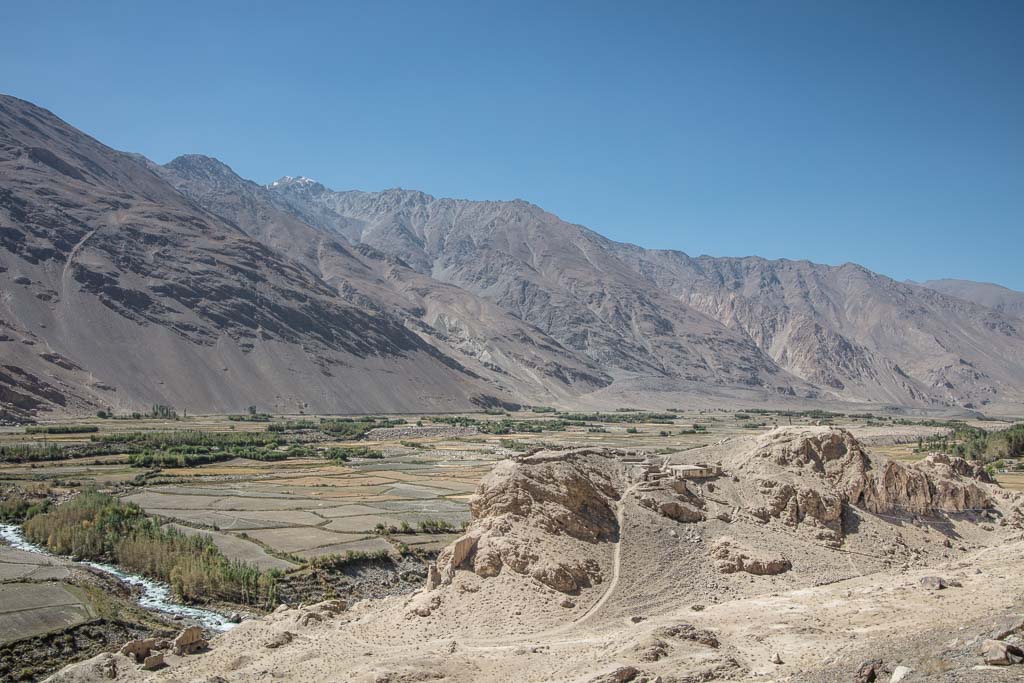
Just 15 km outside of Ishkashim you’ll arrive to Namadgut, where the main draw is the ruins of the Khaakha Fortress. Khaakha is free to visit, although there will likely be a couple of young boys hanging around near the little stand set up selling a few Wakhi handicrafts, who will likely ask for a few Somoni to give you a tour Khaakha (and also the opportunity for them to practice their English language skills with you).
The oldest sections of Khaakha are estimated to have been constructed in the 2nd century BC during the Kushan Empire, and Khaakha was believed to be the leader of the Siah-Posh which was a fire-worshipping tribe, whose descendants can be found in Nuristan in Afghanistan. There are armed Tajik border guards that are present at Khaakha, so make sure and check with them for permission to explore the reaches of the ruin nearing the river.
Nearby to Khaakha is a small museum, entrance is 10 TJS, ask around to locate the museum director Odinmammad Mirzayev to open the doors for you.
Namadgut to Yamchun
About 27 km northeast of Namadgut you’ll come to the village of Darshai where you can visit a Mazar with petroglyphs, but the biggest attraction here is the trek to Darshai Gorge.
From Darshai it is possible to do a trek to Darshai Gorge and continue onto a yurt camp. You can continue to trek further to end up at a homestay in Bodomara over in the Shokhdara Valley with views of Mayakovsky Peak.
It is recommended to take a guide especially if planning to trek beyond Darshai Gorge, guides can easily be arranged in the village, and chances are they’ll find you and offer their guiding services before you even have a chance to ask around. There are homestays available in Darshai, as well as some nice places to camp along the road- but if it looks like it may be someone’s property, just ask if it’s okay to set up a tent there.
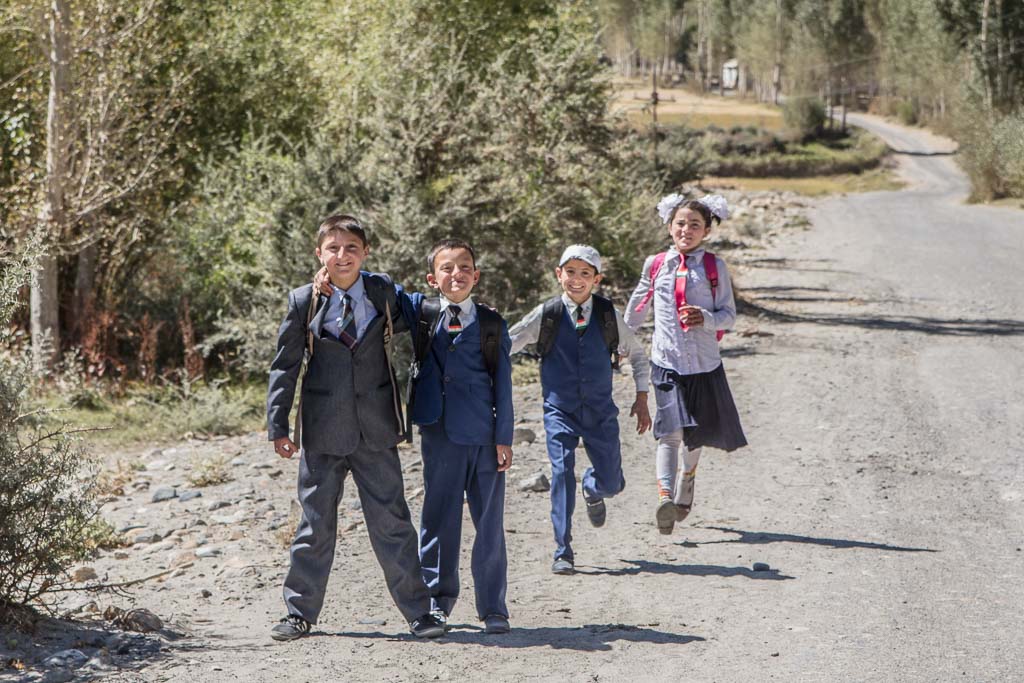
About 10 km northeast of Darshai is the village of Shitkharv, where you can visit the shrine of Oston i Bobo Khoki. Bobo Khoki was believed to have been born and emerged from his mother’s grave after her death.

In the next village over of Zumudg is the solar calendar used to determine the day of Nowruz, otherwise known as the Persian New Year, and to everyone else in the world- spring solstice.
About 5 km northeast of Zumudg is Ptup, home to the Shrine to Shoh Isomuddin, which is believed to be one of the first Ismaili messengers to bring the religion to the region.
Yamchun

Here it is that you’ll find Yamchun Fortress and Bibi Fatima hot springs, two of the Tajik Wakhan’s most famous attractions. At Tughoz, you’ll turn off of the Wakhan Valley road and go 6 km up hairpin turns to reach Yamchun Fortress. Yamchun Fortress (the actual name of the fortress is Zamr i atish-parast, meaning fortress of the fire-worshipper) is a 12th century fort and the most impressive of the remaining castle ruins, although some sections of the fortress are believed to date back to 3rd-1st centuries BC during the Kushan ruling period.
On the eastern side of the site sits a smaller fortress called Zulkhomer. From Yamchun you have great views of the valley, across to Khandood Village in Afghanistan as well as the icy Hindu Kush Mountains serving as a backdrop.

Continue another 1 km uphill to arrive at Bibi Fatima hot springs. The hot spring is open from 5 am-9 pm and entrance is 1 TJS for Tajiks, 10 TJS for foreigners. They alternate genders every other hour and bring your own towel.
Women specifically come here to help boost their fertility. Bibi Fatima is actually one of the more unique hot springs I’ve ever been in, you’ll climb down about 10 steps to be in a cave. And not only is it interesting being in a cave but also if you’re a woman, getting to experience the ritual of the women who come here to boost their fertility.
First, you must drink the water running into the cave, second, there is one special section of the cave wall that you are to touch with your hands, press your lips and forehead too. Next, there is a small pool within the cave that you have to go over to and take the water and pour it over your eyes 3x.
Next, you must go over to the small cave within the cave and climb into it, here you’ll reach under and grab a handful of rocks. You must take the largest of the white rocks in your hand and place them under your tongue and leave them there for the remainder of your soak.
Lastly, when exiting the hot spring you must walk out backward, and do not dry yourself with a towel once back into the dressing room- let yourself air dry, voile! You’re now extra fertile.
Note, you must go into the hot spring nude. There is a nice chaikhana just adjacent to the hot spring if you’re looking to grab a meal after a soak.

On the way back down from Yamchun there is a scattering of homes, some of which are homestays in the little village of Vichkut.
For those that want to break up their Wakhan journey and spend the night near Yamchun and Bibi Fatima, I recommend staying at Charshanbe’s Homestay (+992 938305239) which boasts excellent views over the valley from their tapchan out front.
Charshanbe has a beautiful Pamiri-style home for guests to stay in where they will serve you excellent soups and plov, and even have a nice western-style toilet and shower in a separate building in the yard. A bed (on a kapurcha- traditional Tajik floor mattresses) including dinner and breakfast will run about 170 TJS per person. His son, Alishoh once worked for PECTA, speaks English, and can create tours of the Wakhan and Pamirs as well.

Yamchun to Langar
Another 5 km northeast from Yamchun will bring you to Yamg, Yamg is home to House Museum of Mubarek Kadam Wakhani, Wakhi lived from 1839 to 1930 and was a Sufi mystic, a musician, as well as an astronomer. Don’t miss the solar calendar for determining Navruz, just outside the museum. Admission is 10 TJS, ask around to find either Aydar Malikmamadov, or his English-speaking son Nozim to let you in.
There are a couple of homestays in Yamg, one of which is ran by the Malikmamadovs’. Continue up the road a short distance to Vnukut village to visit the shrine of Chehel Murid.
Continuing up the road will next bring you to Vrang. Vrang is home to an ancient Buddhist Stupa.

The origins of the Vrang Stupa are actually unknown but a common theory is that it was originally built as a Zoroastrian fire temple. It’s thought to have been a significant religious complex and believed to date back to the 6th century roughly. The rock at the top of the Stupa is believed to have the footprint of Buddha in it.
Scattered around the Stupa are caves that Buddhist monks used to live in. Above the Stupa is a hiking trail that will take you up and over Vrang Pass to Rubot over in the Shokhdara Valley.

Just below the Stupa you’ll find the shrine and museum to Osorkhona i Abdullo Ansori. Abdullo Ansori was a famous Sufi poet from the 11th century.
There are a few homestays on offer in Vrang. In the next village over of Zugvand there is a shrine to Ostoni Panjai Shoh, as well as nice views across the river to the village of Qala e Panja and the Qala e Panj Fortress dating back to the Siah-Posh days on the Afghan side of the border.
The next stop along the Wakhan is Zong. The biggest attraction in Zong is the Vishimqala (the Silk Fortress). Vishimqala was built to protect this stretch of the Silk Road from Afghan and Chinese invaders of the time.

There are numerous shrines and holy places around the village of Zong. A couple of homestays that will take you in for a night exist here in Zong.
Just a little up the road and just before arriving to Langar is the village of Hissor. Hissor’s largest attraction is the Zangibar Fortress and the Oston i Nuri Muhammed Shrine.
In Hissor I without a doubt recommend staying at Davlatkhon’s Homestay (+992 935148819) with nice clean rooms and an indoor shower and toilet. His wife cooks delicious meals and they can help you arrange onwards transport, but note that Davlatkhon and his wife both speak mostly Tajik and Russsian but can phone their daughter who can translate to/from English for you. A bed, including dinner and breakfast, will set you back 220 TJS per person.
Langar

Langar is a decent sized village set in a nice green stretch of the valley where the Pamir and Wakhan Rivers join the River Panj.
Sites to see around Langar include Mazar-i Shoh Kambari Oftab– an important shrine to the sun from Pre-Islamic times, the garden adjacent to it, the Langar Jamoat Khona (prayer house), and the 6,000 petroglyphs located just a 20 minute trek up from the Langar school.

From Langar it is possible to do a trek, starting between Hissor and Langar and taking you up to the Pik Engels Meadows with views of the south face and panoramas of the Hindu Kush across the valley. It’s possible to climb the side peak (it’s unnamed) from Pik Engels.



For more information on the trek and maps, head over to trekkinginthepamirs.com and pick up Jan Bakker’s Trekking in Tajikistan e-book.
There are a handful of homestays in Langar.

Langar to Khargush Pass
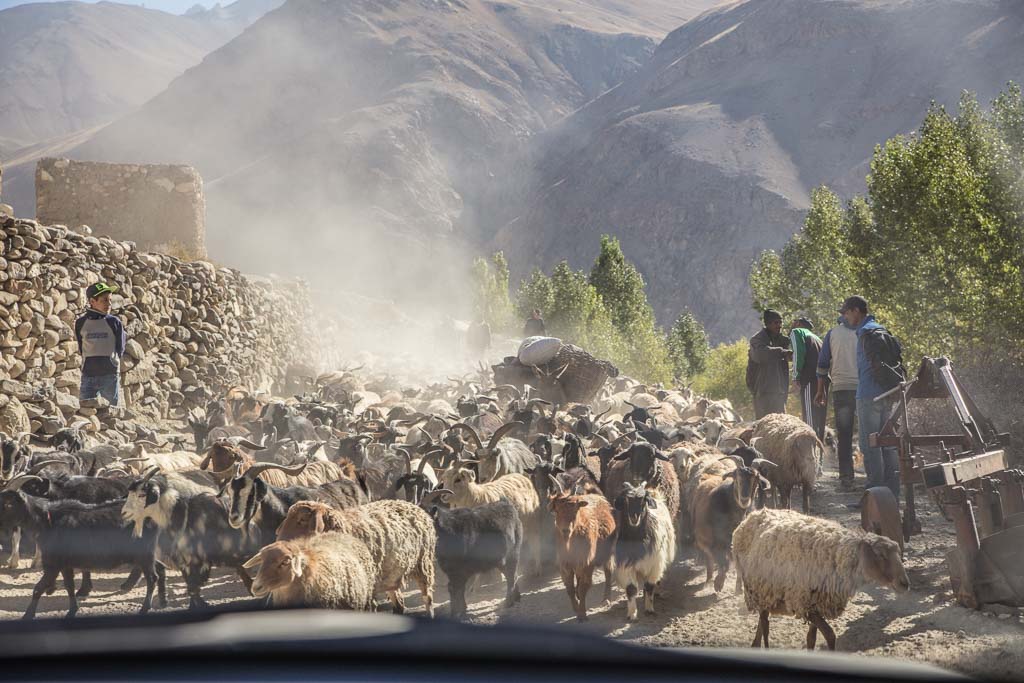
Leaving from Langar up towards Khargush Pass will take you up a series of hairpin turns to Ratm, the official last (or first depending on the direction you’re headed) village of the Tajik Wakhan Valley. There is a small ruin of a fortress in Ratm thought to have been built by the Kushans in the 2nd-3rd century BC.
Once in Ratm if you look down toward the river bridge across to Afghanistan where the Wakhan and Pamir Rivers join, just below the Ratm Fortress. It is currently not open to foreigners, however, if it ever does it could make access to the Little Pamir in the Afghan Wakhan much easier.

About halfway between Ratm and Khargush, it’s possible to do a trek taking you up and over Mats Pass to Jawshangoz in Shokhdara Valley.
Between Ratm and the Khargush military checkpoint, there are no villages and just a couple of houses, but the winding drive with views of icy peaks in the Afghan Wakhan is exhilarating.

Optional: Visit Zorkul. At the Khargush checkpoint, you will either turn off and head toward Zorkul Nature Reserve (prior permission and permits from the PECTA office in Khorog are mandatory) or continue north over the Khargush Pass to meet again with the M41 near Bulunkul.
If opting to head north past the checkpoint you will eventually arrive at the lunar-like landscapes of Khargush Pass. There are two small lakes located in Khargush Pass, from near these lakes it is possible to do a 1.5 hour trek up Panorama Ridge for amazing views of the stark mountain landscapes around.
Heading east? Read my Eastern Pamir Travel Guide first

Trekking in Wakhan Valley
The Wakhan Valley has huge trekking potential. Many of the treks I am about to mention have been listed in the previous sections.
- Garm Chashma to Vezdara– From the hot spring south of Khorog to the village of Vezdara in the Shokhdara Valley.
- Baghush to Mayakovsky Peak– From the Village of Baghush outside Kosideh visit Mayakovsky Peak’s western edge.
- Darshai Gorge– Start near the bridge in the village of Darshai, walk around a small hill with ruins of a fortress, and follow the path at the side of the river to reach Darshai Gorge.
- Darshai Gorge to Mayakovsky Peak– From Darshai Gorge continue to a yurt camp (only in summer as the yurts are used as hunting camps in winter during the Marco Polo sheep season). From the yurt camp, another day of trekking will take you to Mayakovsky Peak and eventually onto Bodomara in the Shokhdara Valley.
- Vrang to Rubot– Above the Buddhist Stupa in Vrang follow a trail that will take you up and over the Vrang Pass and into the Shokhdara Valley village of Rubot.
- Langar to Pik Engels Meadows– Between Hissor and Langar find the trailhead (there are several). Follow the trail up to a small reservoir and then take the trail headed east. Above Langar, the trail will bend toward the northwest taking you straight to the Pik Engels Meadows. There are optional side trips taking you right up to Pik Engels and to trek an unnamed side ridge.
- Between Ratm and Khargush to Jawshangoz– This trek will take you up and over the Mats Pass and eventually into the Shokhdara Valley to the village of Jawshngoz. Alternatively, you can begin this trek from Langar.
- Panorama Ridge– A steep hike about 7 km before Khargush (coming from Ratm direction) that begins just before you reach the first of the two lakes in Khargush Pass. The trek takes 1.5 hours up and 0.5 hours down and gives 360º panoramic views of the pass and stark lunar landscapes.
Most all of these treks are well marked on the Pamirs Map by Markus Hauser. The Langar to Pik Engels Meadow trek has a description in Jan Bakker’s Trekking in Tajikistan book. These treks take place at fairly high altitudes- make sure and take the time to acclimatize properly.
Need more ideas? Read the 10 best treks in Tajikistan

Wakhan Valley Budget
Your daily budget will vary greatly depending on how you go about transportation, but here is a rough guideline, assuming you plan to stay in homestays each night:
Private 4×4 Hire, solo traveler:
$125 USD per day
Private 4×4 Hire, group of 4:
$45 USD per day
Shared taxi/marshrutka, solo traveler:
$20 USD per day
Hitchhiking, solo traveler:
$15 USD per day


Packing List
Here are a few handy items I like to have on me when exploring in the Wakhan Valley and Tajikistan.
Hiking Gear
- The Inreach Explorer+. A GPS & SOS beacon, that can also send and receive text messages. Delorme/Garmin offers some good monthly plans when in use.
- A solar charger can be a great way to keep your electronics and batteries charged when trekking in remote areas of the country with no access to electricity for days on end.
- An external battery pack can also help you out in a pinch when batteries are dead and you’re in the middle of nowhere.
- I use the Osprey Ariel 65L backpack and recommend Osprey’s products because of their guarantee. Shop backpacks here!
- A tent is handy if you plan to do any trekking, or are planning to cycle or hitchhike the Pamir Highway. I’ve been using MSR’s Hubba Hubba tent for several years now and can’t recommend it enough. Another favorite is my Mountainsmith Morrison Evo tent.
- A sleeping bag can prove useful if planning to camp while cycling or trekking and also for chilly nights even in a homestay. I use a Nemo sleeping bag cold rated to 15ºF/-5ºC.
- A good pair of hiking boots. My personal favorite is the La Sportiva Nucleo High GTX hiking boot.
- If planning on trekking/camping and you like to enjoy a warm meal I can recommend a lightweight cooking camp set.
- I personally use the Katadyn water filter. Tap water in the entire country is unsafe for drinking and natural water sources can be contaminated.
- Trekking poles can prove helpful.
- A headlamp will come in handy!
- Don’t forget the sunscreen! Don’t let the cold fool you.
- Mosquito Repellant can prove handy in springtime at lower elevations, although I’ve personally never run into many bugs out here in my late summer and fall adventures.
Maps
- ‘The Pamirs‘ by Markus Hauser. Can be found online on Amazon, or can always be picked up at the PECTA office. The creators also created a Northern Tajikistan map as well as Southern Tajikistan map.
Books
- ‘Tajikistan and the High Pamirs‘ by Robert Middleton & Hue Thomas. This is a huge book, but it has so much good info on Tajikistan from the history, great-game stories, travel, and more!
- ‘Bradt Tajikistan‘ by Sophie Ibbotson & Max Lovell-Hoare. The most up to day and info-packed Tajikistan guide in print.
- ‘Central Asia‘ by Lonely Planet. Handy to have with you, although don’t treat it like a bible. Many times information is out of date as things change rapidly, though proves handy on multi Central Asian nation itineraries. The ‘Central Asia Phrasebook‘ by Lonely Planet I found this to be a handy item for Tajik, Russian and Kyrgyz phrases, not so much for the Wakhi phrase section.
- ‘Trekking Tajikistan‘ by Jan Bakker & Christine Oriol. Jan and Christine are both wealths of knowledge on trekking in Tajikistan. This is the follow-up to Jan’s original e-book.
Great Online References
- Pamirs.org: A great all-around resource for all things Pamir. From trekking, visa & permit information, cycling, sport, and more!
- Trekking in the Pamirs: Jan Bakker’s website with information on many hikes all over Tajikistan (not just the Pamirs!).
- PECTA: Can help you arrange anything Pamir. Very responsive.
- Caravanistan: Saule is a wealth of knowledge on Central Asia. They are very responsive via email and can put you in contact with numerous tour agencies in the country.
- Indy Guide: Making travel in the whole of Central Asia & Mongolia easier buy providing the largest community marketplace of Central Asian tour operators and drivers.
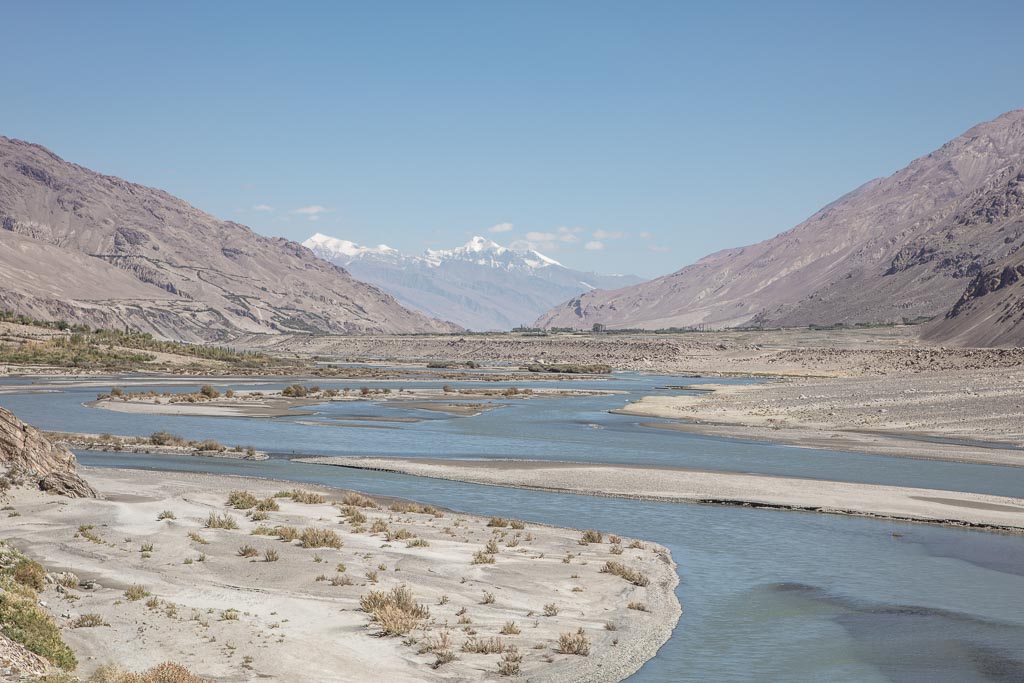
Want More Posts From The Wakhan?
In 2016, 2017, 2018, and 2021 I explored the Tajik Wakhan Valley and in 2017 I finally got across the border into the Afghan Wakhan Corridor.
- The Afghan Wakhan Corridor in photos- A few of my favorite photos from my time spent in the Great Pamir and Wakhan Range.
- Solo female travel in Afghanistan: The Wakhan Corridor- What it was like and what you need to know.
- How to get an Afghan Visa- Getting an Afghan visa isn’t as difficult as you would think from the consulate in Khorog.

Need Travel Insurance for Tajikistan?
Start shopping plans over at battleface, my go-to travel insurance choice, or over at World Nomads.



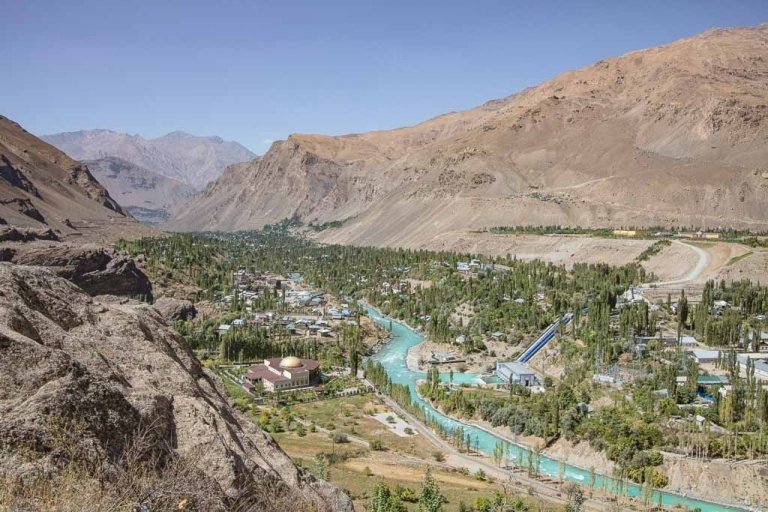







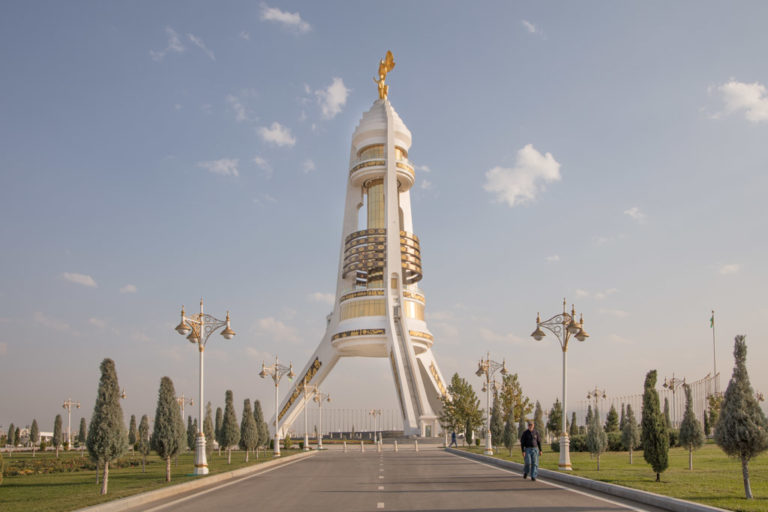



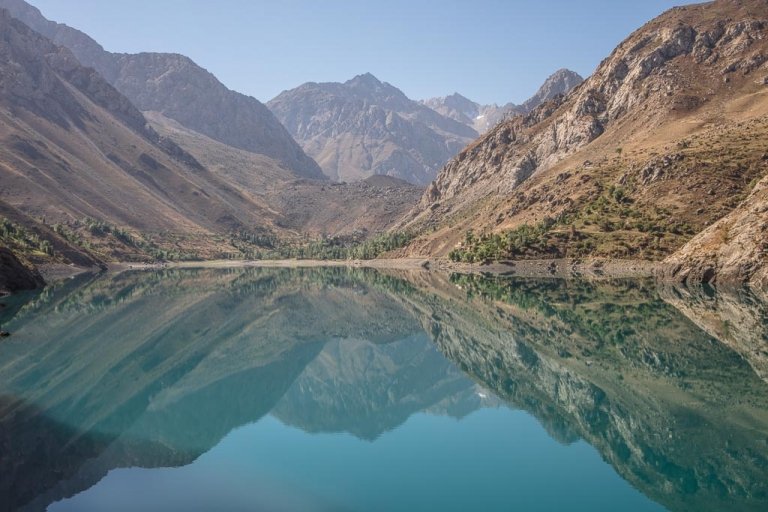









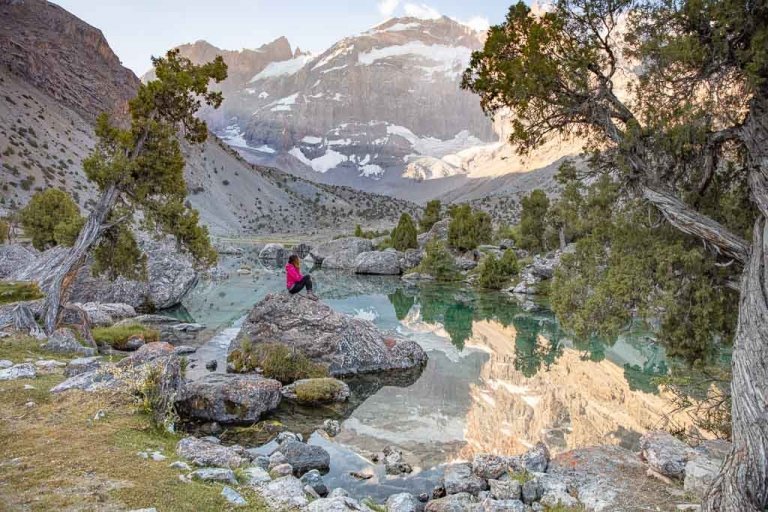










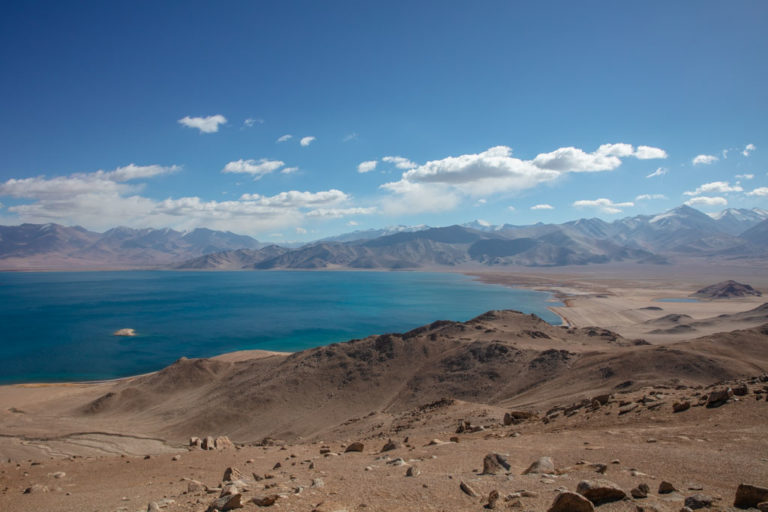



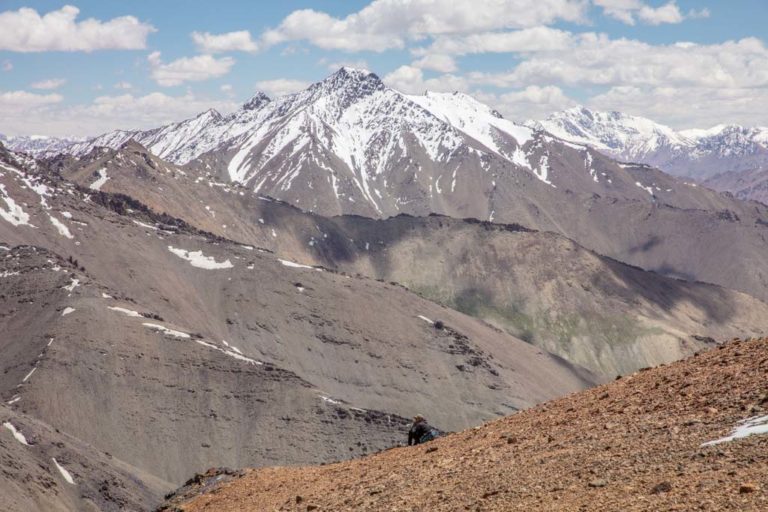






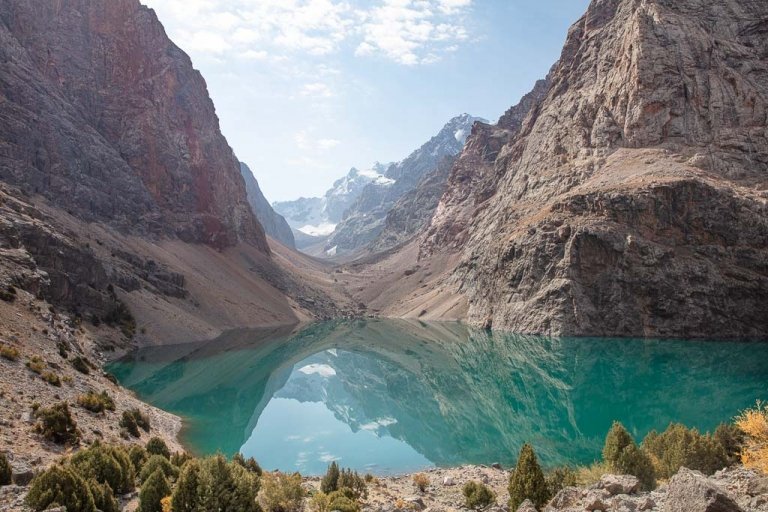




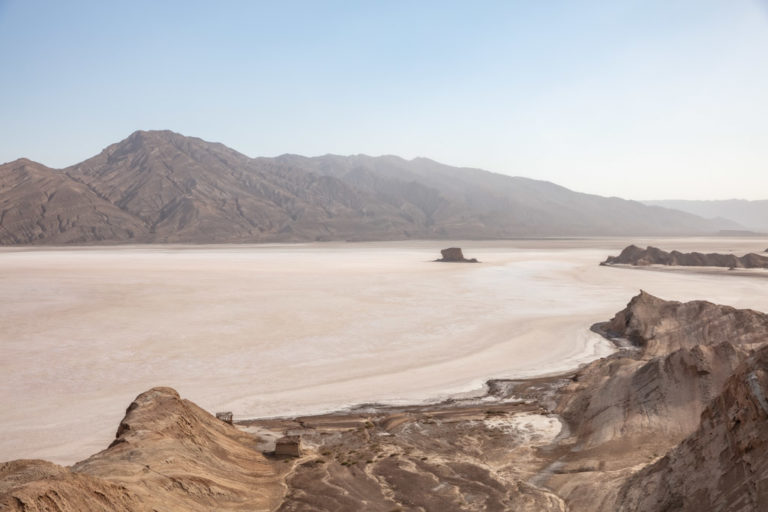




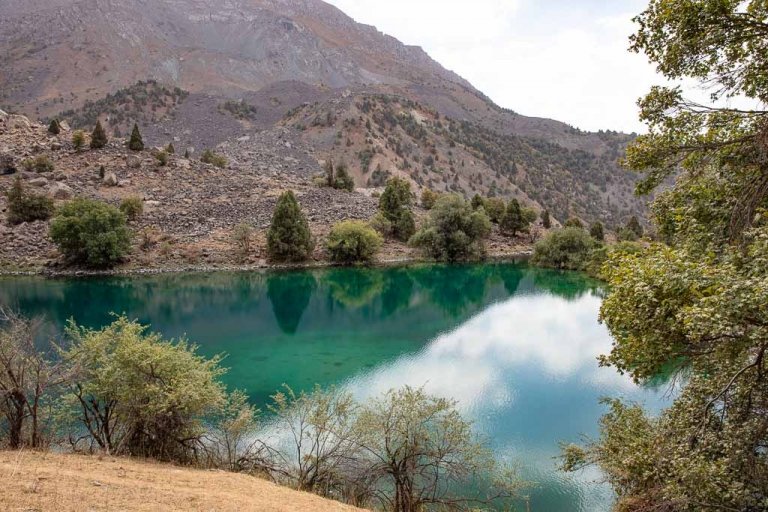


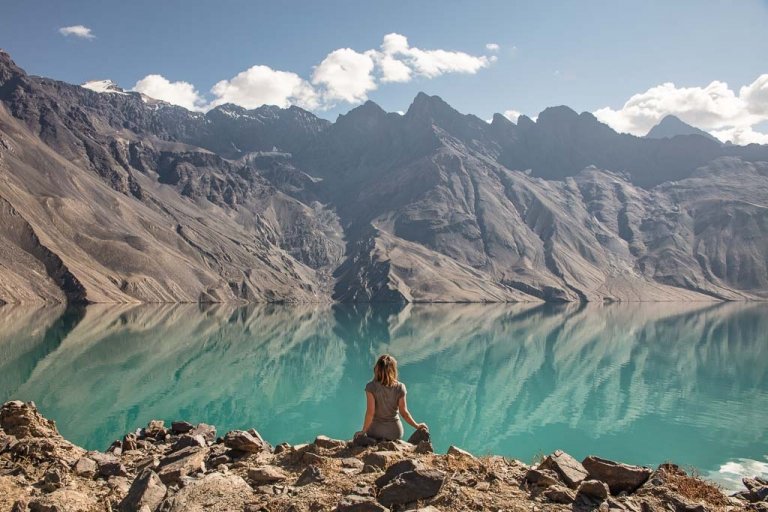



Hi. I did the Wakhan in 2016 renting a 4×4 with 3 others I met at the hostel in Khorog. He abandoned us in Murghab, not fulfilling his initial obligation to return two of us to Khorog. The resulting adventure is another story. Enjoyed your article – very thorough and accurate.
Having owned your exact Osprey backpack, I thought is awful (it was custom fit with heat formed waist belt). For the last 12 years I have owned both the Deuter Futura Vario 50+10 and 60+10. Great pockets and endless great features with an adjustable backband to be able to size and fit the pack endlessly. A webbing wore out on my original 50+10 and Deuter replaced the entire pack. Have used the 60+10 to backpack alone the L trek in Iceland carrying tent etc, stove and food with no problem at age 66.
Oh wow, sorry to hear about the abandoning driver, but it sounds like you still had quite the adventure. I do have a couple of friends that absolutely love Deuter packs and said the same, they hated Osprey. Oddly, I did try Deuter and they just didn’t fit my body, though they are good quality packs.
I am Ibrahim from Wakhan Khandud. l am a guide in the Wakhan corridor if tourists want visit Afghan Wakhan can tell me or contact me I am a local guide in the Afghan Wakhan my price is cheap for all tourists. WhatsApp +93749229030.
Thanks.
Hi Nicki,
Thank you for this detailed guide. My wife and I are planning to spend 6 weeks in Tajikistan and would like to spend a good couple weeks exploring the Wakhan as it sounds so fascinating.
Hi Mike,
Oh that’s great! I hope you both enjoy Tajikistan. There is plenty to keep you on your toes in the Wakhan for a couple weeks. What’s your route? Tajikistan is a place where 6 weeks can fly by and you still will leave with a long list of places to visit (or maybe that’s just me)…
Hi Nicki,
I’m planning on village hopping for possibly about a week through the Bartang Valley and about another week through the Wakhan. How many of the villages have electricity/electronic charging options? I have an external battery pack but I think I will probably need to recharge every 3-4 days or so. Thanks for all the great info and pictures!
-Jesse
Hey Jesse,
Great, glad to hear you’re going to explore around the Wakhan and Bartang villages. In most villages you’ll find that homestays usually will have electricity for at least a few hours per day. I definitely recommend charging up whenever you get the chance. Another good investment is a solar charger- I have the goal zero nomad. It’s lightweight and thin. It does charge slowly, but is a great option in a pinch. If you haven’t already- I have a guide on the Bartang Valley as well you can check out! Please let me know if you have anymore questions, happy to help out.
Thanks,
Nicole
Hi Nicki-
Thank you for writing this detailed guide as I am planning out my very first trip to Tajikistan. Your photos on Instagram of Tajikistan is what first piqued my interest in the country, as I like many others had never even heard of the country before. You have clearly put a lot of time and effort into this guide (and others on Tajikistan!) and I really appreciate that as I read so many guides on other blogs about places I’m looking at visiting and it only includes very shallow information on the highlights and not much else, or yet another top 10 list… Don’t get me wrong sometimes top 10’s get me inspired and/or introduce me to a new place that may have never been on my radar.
Keep up the good work. I really enjoy your writing style as well as the great information you provide. This guide has made me even more excited to visit the Wakhan Valley, and I am now really deliberating on visiting the Wakhan on the Afghanistan side!
-Kyle
Hi Kyle!
I’m so glad to hear that my photos put Tajikistan on the radar for you, and that you’re actually planning a visit! I hope you have the most amazing time while you’re there. And I will definitely say that a visit to the Afghan Wakhan is well worth the visit if you can spare the time and expense!
Thanks,
Nicole